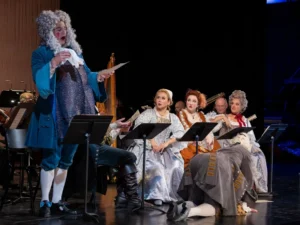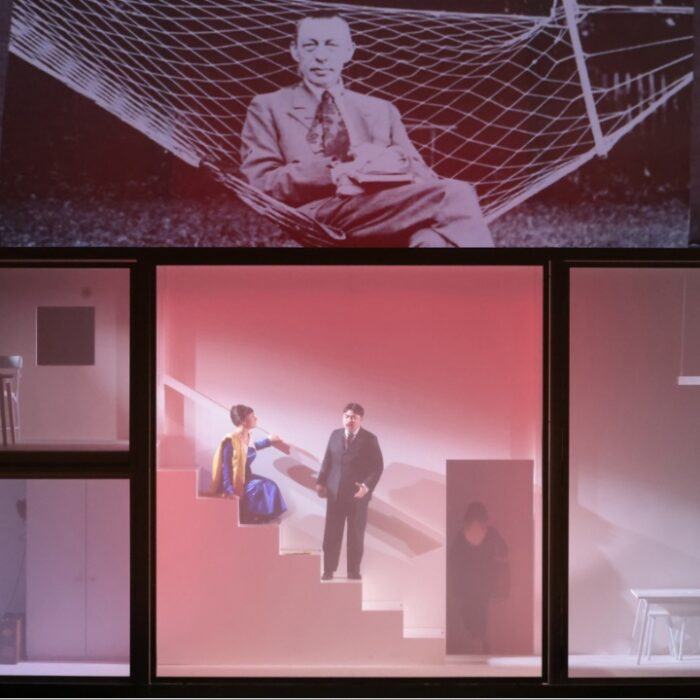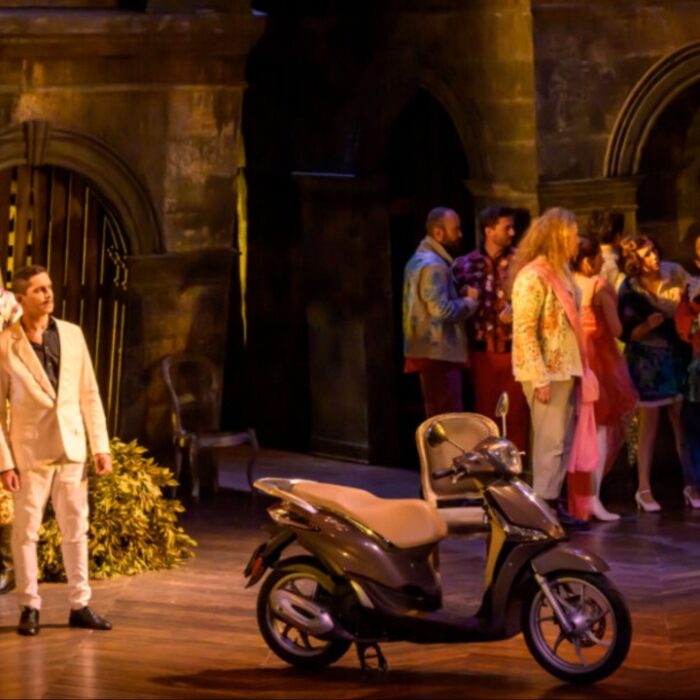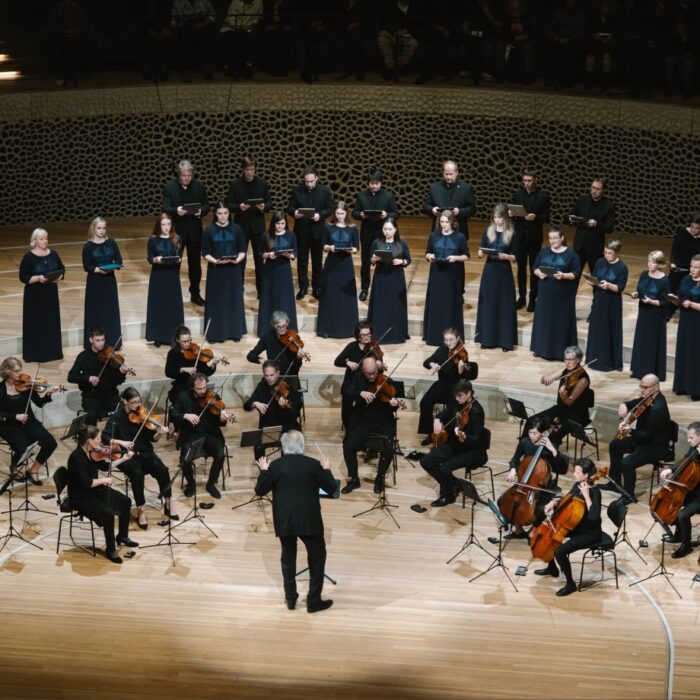
Musikfest Bremen 2025 Review: The Dragon of Wantley
BEMF’s Lampe Reminds One That Satire Can Be as Musically Sophisticated as It Is Riotously Funny
By Mengguang Huang(Credit: Patric Leo)
John Frederick Lampe’s “The Dragon of Wantley” (1737), with libretto by Henry Carey, is one of the sharpest English burlesques of the 18th century. By dressing up absurd English verse in the grand musical gestures associated with Handel, it gleefully mocked the Italian operas that had dominated London. The parody was so effective—and so popular—that it undercut Handel’s serious offerings, hastening his retreat from Italian opera and marking a decisive turning point in London’s musical life.
The production’s visual world already hinted at the opera’s comic absurdity: performers stepped out in extravagantly baroque costumes, brimming with lace, ribbons, and ornate flourishes that lent an air of false pomp to a tale that was anything but dignified. The designers heightened the satire by piling on bold, saturated colors—flashes of red, yellow, blue, and green pushed to near-gaudy intensity—so that the stage looked more like a carnival of rustic excess.
Teresa Wakim as Margery set the tone of the whole production. She combined polished operatic singing with exaggerated comic dialogue, slipping easily between crystalline runs and deliberately overdone bursts of mock scolding or laughter. Her playful ornamentation carried a hint of wit, and her glances and gestures turned Lampe’s satire into living theater. Her foil, Hannah De Priest as Mauxalinda, could not sing due to illness, so Swedish soprano Tessan-Maria Lehmussaari stepped in at short notice. Despite the hall’s tricky acoustics, she sang with poise and musicality, her tone fitting smoothly with De Priest’s vivid stage presence. Together, Wakim’s incisive wit and the combined artistry of De Priest and Lehmussaari gave the rivalry between the two women real sparkle—the duet in the second half fought with trills, gestures, and arched eyebrows that kept the audience laughing aloud.
Aaron Sheehan as Moore lit up the stage with his mock-heroic poses and bright and playful tenor. What made him especially likable was how he showed three sides at once: the gentle warmth of a man happy to stay close to the women, the open fear of someone terrified by the dragon, and at last the burst of shining confidence when he somehow killed it in a comic way. This mix—sweet, scared, and suddenly heroic—made his Moore both silly and deeply charming, a character the audience couldn’t help but cheer for.
The Dragon’s glittering costume, shimmering like scales, made him striking from the start. Even before he sang, John Taylor Ward kept the audience on edge, stepping out at odd moments to remind everyone that the monster was always near. Only at the end did he finally open his mouth, and the wait paid off. His bass was deep and weighty, yet tinged with silliness that matched the comic spirit. His showdown with Moore became a playful send-up of operatic battles, the two tossing musical lines back and forth while the audience laughed at the fun.
Douglas Ray Williams as Gubbins offered the steady counterweight, his grounded tenor and straight-faced delivery giving the ensemble scenes a firm base against which the chaos could unfold. His opening lines and final words framed the whole evening, as if pulling the audience back to 1730s London, when opera was a crowded marketplace and sharp satire was aimed as much at rivals as at dragons.
The BEMF Chamber Ensemble, led by Stephen Stubbs and Paul O’Dette, played with infectious energy. Strings darted and leapt through Lampe’s lively rhythms, while theorbo and baroque guitar gave the music a rustic snap that fit the opera’s comic spirit. Beyond polish, they shaped the score’s extremes with real flair—heightening the deliberately absurd moments with pointed accents. What made the playing special was its lack of pretension: they let the music’s rough humor and sudden tension speak for itself, shaping each scene with clarity and wit.
Equally integral was the BEMF Dance Company, who turned musical interludes into physical satire. Dancers stormed the stage with exaggerated baroque gestures, each move amplifying the opera’s delight in parody. At moments, singers and dancers blurred together into comic tableaux: Margery clasping her heart as dancers mimed swooning around her, or Moore striking a warrior’s stance only to be mirrored mockingly by the ensemble.
By the final chorus, when opera as high art and nonsense fully embraced, the theatre rang with both Lampe’s brilliant theatre-play and the delighted laughter of the crowd. BEMF’s “Dragon of Wantley” reminds one that satire can be as musically sophisticated as it is riotously funny. Nearly three centuries on, Lampe and Carey’s blend of virtuosity and vulgarity still feels fresh—and, in the hands of this superb cast and ensemble, irresistibly alive.
Categories
Reviews


